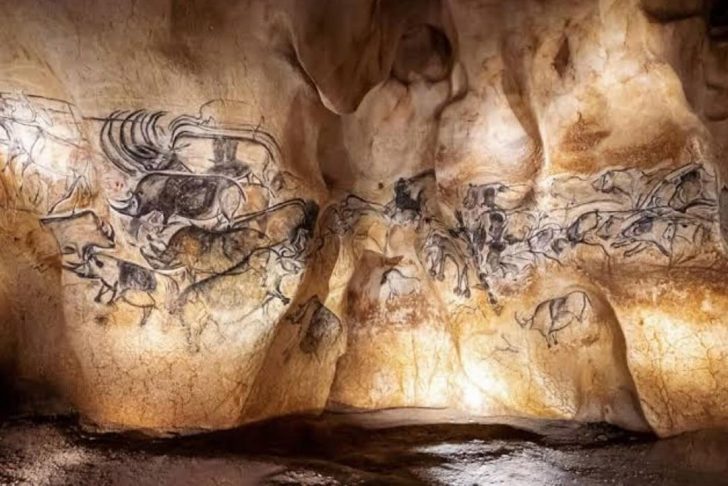Art serves as a profound window into the lives and minds of ancient humans, providing clues to their beliefs, values, and daily experiences. The differences between Neolithic and Paleolithic art are striking, reflecting these two periods' contrasting lifestyles and environmental interactions. Understanding these differences offers insight into how ancient humans expressed their world.
Paleolithic Art: The Dawn of Human Expression
The Paleolithic era, known as the Old Stone Age, marks the beginning of human artistic expression. This period spans approximately 2.6 million years to around 10,000 years. Paleolithic art primarily comprises cave paintings, carvings, and small sculptures, with the most famous examples being the cave paintings found in Lascaux, France, and Altamira, Spain.

@kulturmantari.tv | Instagram | Paleolithic art primarily comprises cave paintings, carvings, and small sculptures.
These works were created by nomadic hunter-gatherers who moved with the seasons, following the migration of animals and the availability of wild plants. The art from this period is deeply connected to their environment and survival. Animal depictions dominate Paleolithic art, with bison, mammoths, and deer frequently appearing in cave paintings. These images are believed to have played a role in hunting rituals or as a form of sympathetic magic, where painting an animal might have been thought to ensure a successful hunt.
Sculptures from this era, such as the Venus figurines, are another prominent form of Paleolithic art. These small carvings, often of pregnant women, suggest a focus on fertility and the continuity of the community, using stone, mammoth ivory, and reindeer horn as mediums highlights the reliance on available natural resources.
Neolithic Art: Reflecting a Settled Life
Their art evolved significantly as humans transitioned into the Neolithic era, or New Stone Age, around 10,000 BC. The Neolithic period was marked by the development of agriculture and the domestication of animals, allowing humans to settle in one place. This shift from a nomadic to a sedentary lifestyle profoundly impacted artistic expression.
Neolithic art became more diverse with the emergence of pottery, weaving, and architecture. The art from this period reflects the changes in human society, including the development of permanent settlements and the rise of complex social structures. Unlike the primarily animal-focused Paleolithic art, Neolithic art began to depict more human figures and scenes of daily life, such as farming, hunting, and communal activities.

Students Of History | The Neolithic period was marked by the development of agriculture and the domestication of animals, allowing humans to settle in one place.
One of the most significant changes in Neolithic art was using new materials and techniques. Pottery became an essential medium for artistic expression, often adorned with intricate patterns and designs. These vessels were functional and served as a canvas for creative expression. The advent of pottery also points to the development of storage and surplus management, crucial aspects of settled life.
Neolithic vs Paleolithic Art: A Comparative Perspective
The differences between Neolithic and Paleolithic art are closely tied to the contrasting lifestyles of these two periods. Paleolithic art, created by nomadic hunter-gatherers, is characterized by its focus on animals and survival. The materials used were often natural and readily available, such as stone and bone, and the art was predominantly found in caves and other temporary shelters.
In contrast, Neolithic art reflects the settled lifestyle of agricultural societies. The focus shifted from animals to human activities, and the art became more varied, including pottery, weaving, and architectural decorations. The materials used in Neolithic art were also more diverse, with the introduction of clay, polished stone, and eventually metalworking.
While both Paleolithic and Neolithic art serve as a means of understanding the past, they offer different perspectives on how ancient humans viewed and interacted with their world. Paleolithic art, emphasizing animals and the natural world, reflects the uncertainty and challenges of a nomadic existence. On the other hand, Neolithic art embodies the stability and communal life that agriculture and settlement brought to human societies.



